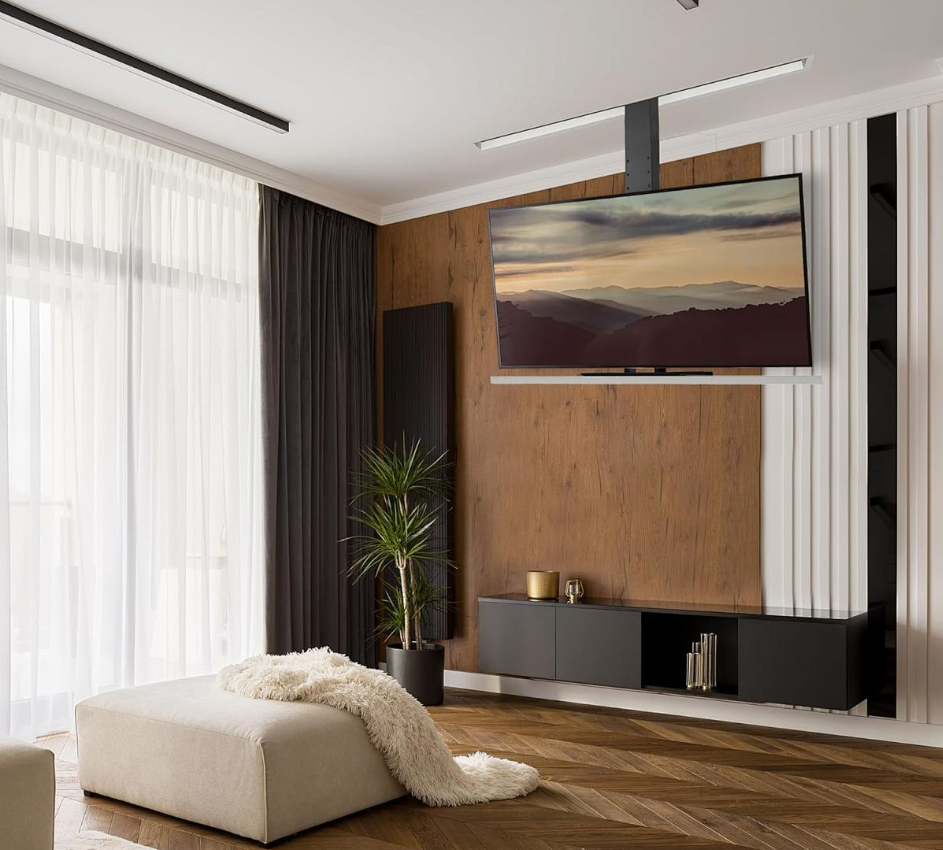The Inclusivity Imperative
40% of households now include members with disabilities or age-related limitations (2025 Global Access Report). Universal design is no longer niche—it’s essential. Modern mounts bridge gaps through adaptive engineering.
3 Breakthrough Accessibility Features
1. Contactless Control Systems
-
Gaze-directed positioning:
Eye-tracking cameras adjust height/tilt (no hands needed). -
Breath-activated presets:
Soft exhale cycles through viewing modes. -
Haptic feedback remotes:
Vibrates when optimal angle is reached.
2. Adaptive Physical Designs
-
Tactile alignment guides:
Braille/raised arrows guide manual adjustments. -
Weight-assisted arms:
5 lbs force moves 100 lbs screens (ideal for limited strength). -
Non-reflective finishes:
Matte surfaces reduce glare for low-vision users.
3. Cognitive Support Tech
-
Automatic routine learning:
Memorizes daily viewing patterns (e.g., lowers at 7 PM for news). -
Distraction-free mode:
Auto-hides unused ports/buttons. -
Emergency voice shortcuts:
“Help” triggers location alerts to caregivers.
2025’s Cutting-Edge Upgrades
-
Neural Interface Compatibility
BCI headset integration for thought-controlled adjustments. -
Self-Diagnosing Joints
Alerts maintenance needs via vibration patterns. -
AR Installation Guides
Projects holographic arrows onto walls for DIY setups.
Installation Essentials
-
Wheelchair-Accessible Height Range:
28"-50" vertical travel (ADA 2025 revision). -
Clear Floor Zones:
Maintain 30" depth for mobility devices. -
Sensory-Safe Wiring:
Shielded cables prevent EMI interference with medical devices.
FAQs
Q: Can mounts adapt to progressive conditions like ALS?
A: Yes—modular upgrades add sip/puff controls when mobility declines.
Q: How weatherproof are outdoor accessible mounts?
A: IP56-rated with heated panels preventing condensation on screens.
Q: Do neural interfaces require surgery?
A: No! Non-invasive headsets connect via Bluetooth.
Post time: Jun-20-2025


